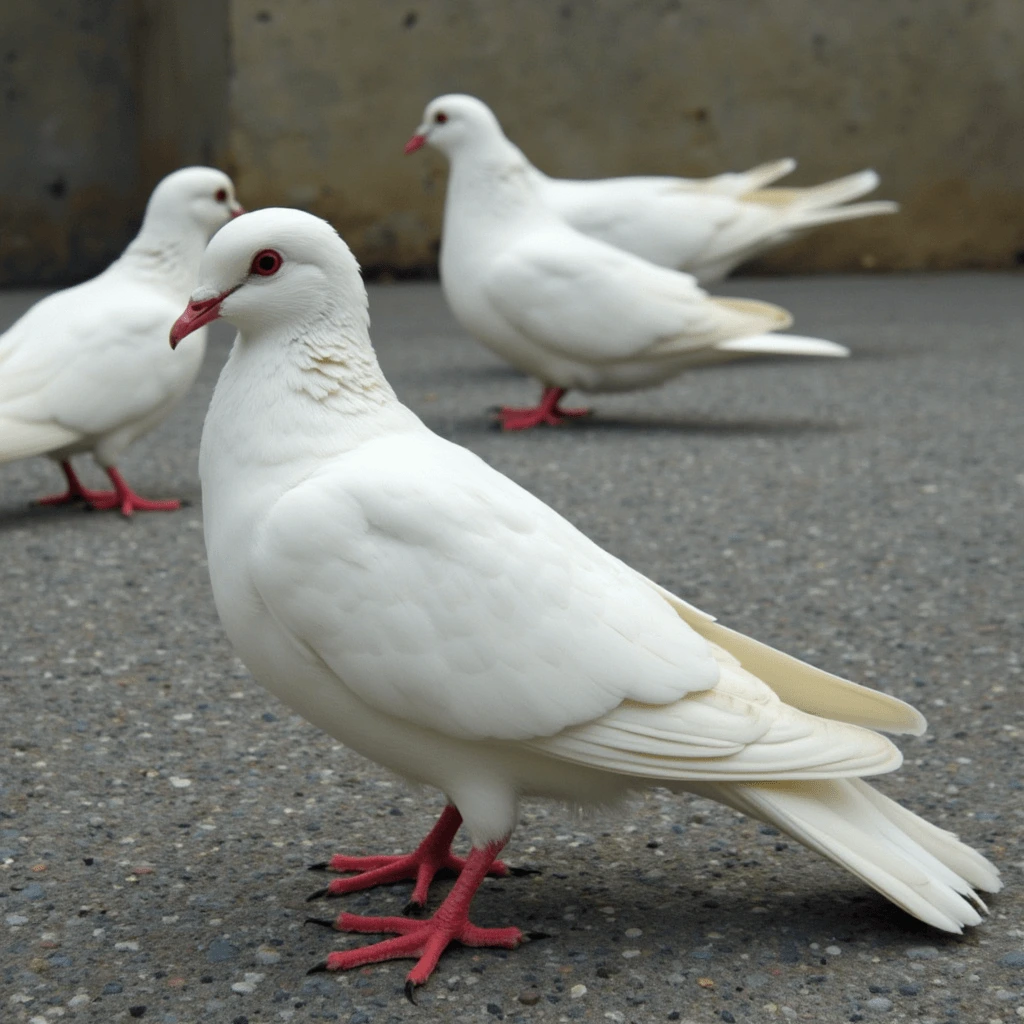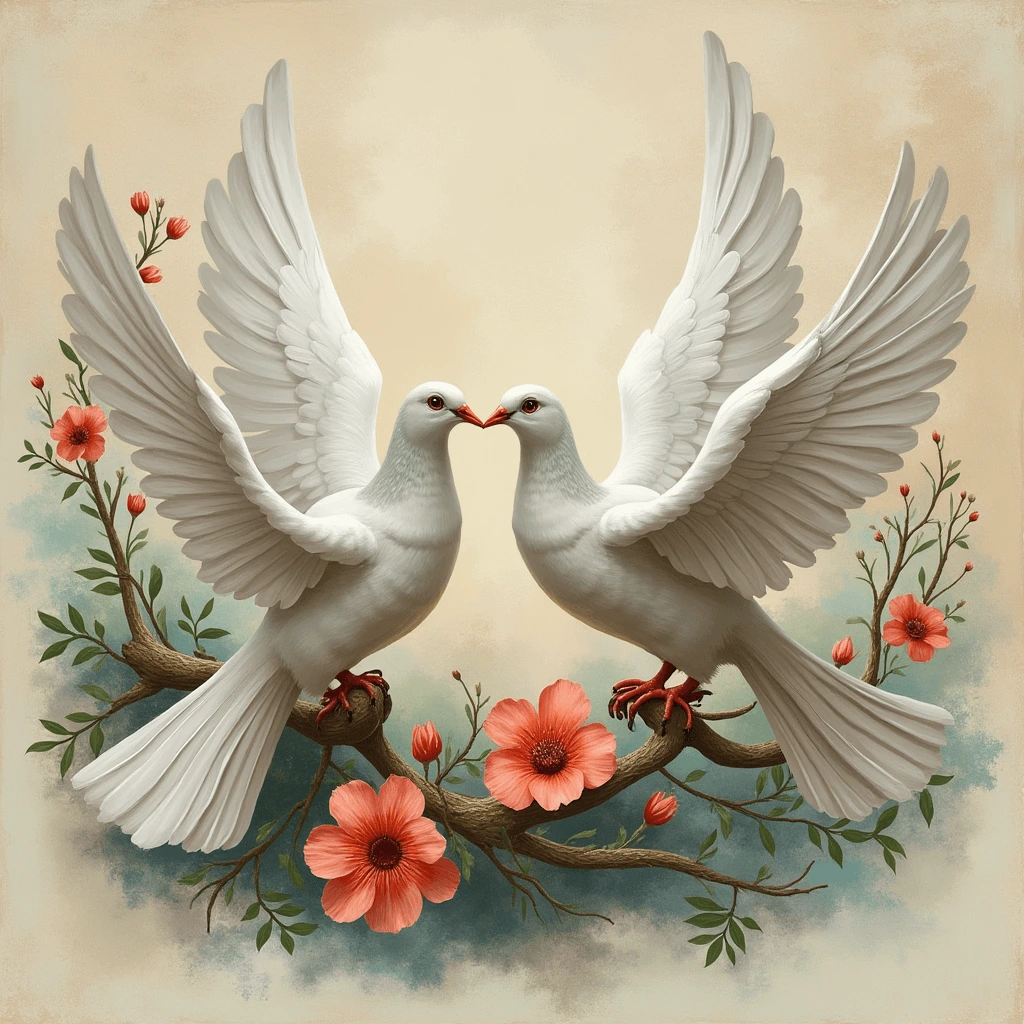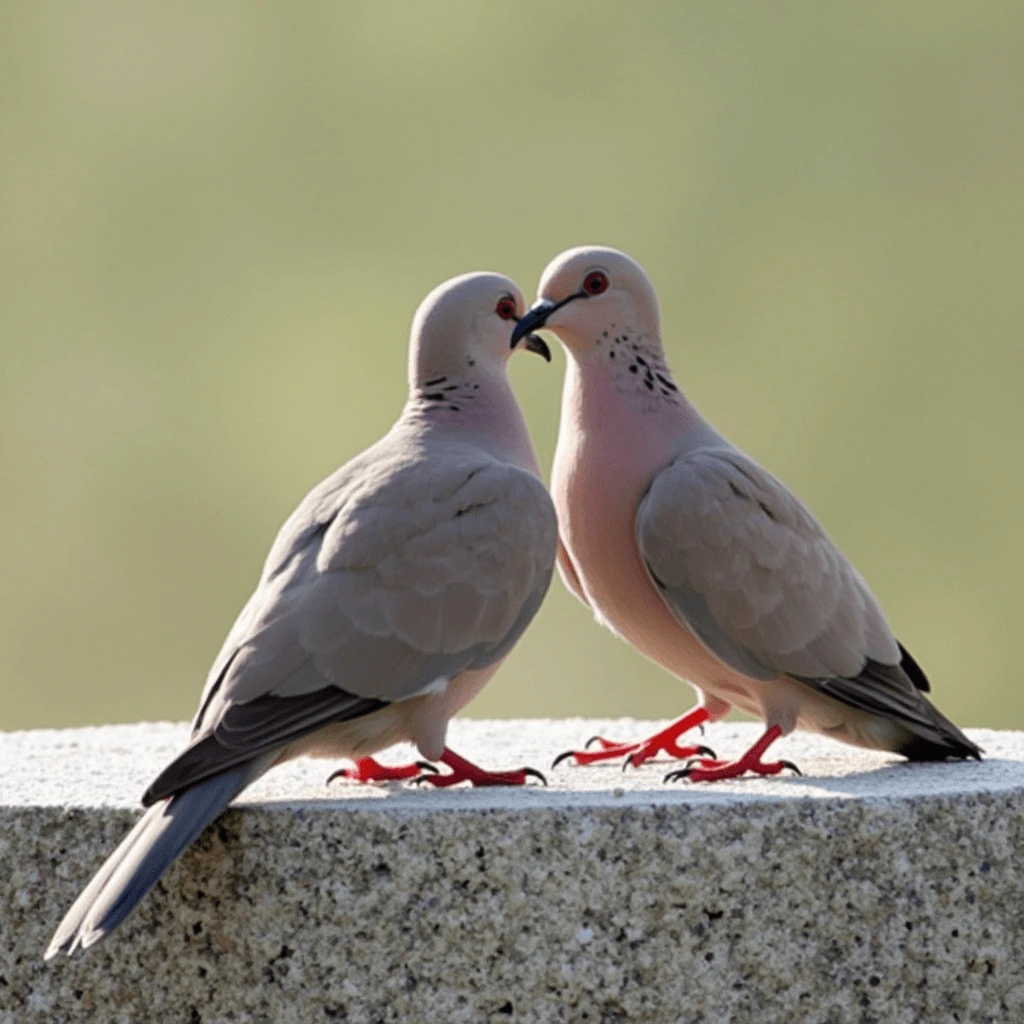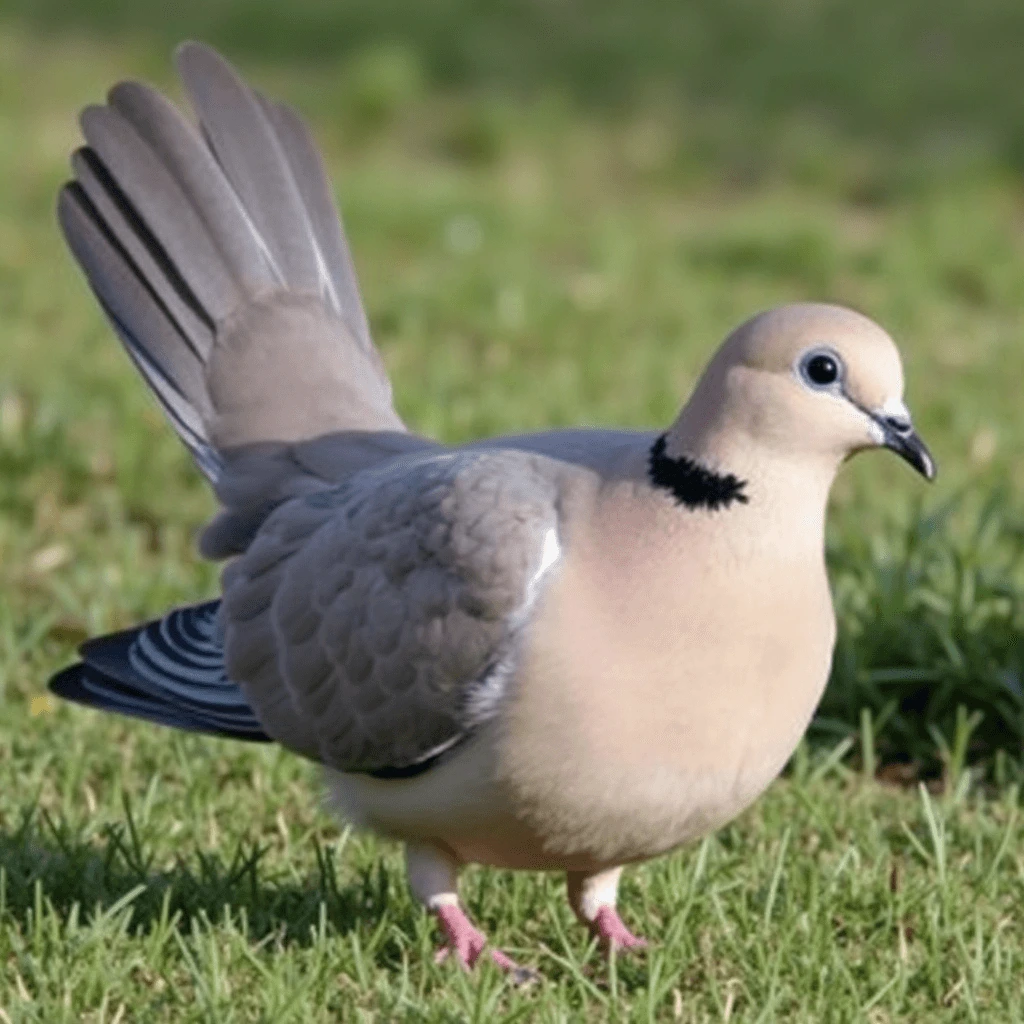Introduction
Doves are among the most fascinating and widely recognized birds in the world. In this article, we’ll explore 10 amazing facts about doves, uncovering their unique characteristics, behaviors, and symbolic significance. People know these gentle birds for their strong navigation skills, lifelong mating bonds, and adaptability to various habitats. Whether soaring gracefully in the sky or peacefully cooing from a perch, doves continue to captivate people across cultures and continents. Keep reading to discover surprising details about these remarkable birds!
From their incredible homing instincts to their lifelong monogamous relationships, doves have many traits that make them special. In this article, we’ll explore 10 amazing facts about doves, uncovering their habits, diet, communication, and more. Whether you’re a bird enthusiast or just curious about these graceful creatures, you’re in for some fascinating insights!
Let’s dive into the most interesting facts about doves and discover what makes them truly remarkable.

Doves Are Found All Over the World

Doves are among the most widespread bird species, found on nearly every continent except Antarctica. They thrive in diverse environments, from bustling cities to remote forests, making them one of the most adaptable birds in the world. Their ability to live in various habitats is one of the reasons why they are so commonly seen.
Habitat & Distribution
Doves are incredibly versatile when it comes to their living conditions. You can find them in urban areas, farmlands, grasslands, woodlands, and even deserts. Some species choose tropical rainforests, while others adapt well to dry, arid environments.
- In North America, the Mourning Dove is one of the most common species, often seen perched on power lines or feeding in backyards.
- In Europe, the Eurasian Collared Dove has expanded its range rapidly over the past century.
- In Asia and Africa, doves inhabit both rural and urban areas, often coexisting with human populations.
- In Australia, several native species, like the Crested Pigeon, thrive in both the wild and suburban gardens.
Doves’ ability to live in both natural and human-altered environments makes them a globally recognized bird.
Common Species of Doves
While the term “dove” refers to many species within the Columbidae family, here are some of the most well-known types:
- Mourning Dove (Zenaida macroura): Common across North America, known for its soft, mournful cooing.
- Rock Dove (Columba livia): Also known as the common pigeon, found in cities worldwide.
- Eurasian Collared Dove (Streptopelia decaocto): Rapidly expanding across Europe, Asia, and North America.
- White Dove: Often bred for ceremonial releases and symbolic events.
- Diamond Dove (Geopelia cuneata): A small, delicate species native to Australia.
Each species has slight differences in behavior, appearance, and habitat preferences, but all share similar traits that make them well-adapted survivors.
Doves’ Adaptability to Urban Life
Unlike many wild birds that struggle to live near humans, doves thrive in urban and suburban settings. They often nest on buildings, rooftops, and ledges, taking advantage of human-made structures.
- Food Availability: Cities provide an abundance of seeds and grains, making it easy for doves to find food.
- Nest Protection: Man-made structures offer safe nesting spots away from ground predators.
- Mild Temperatures: Many urban areas provide warmer microclimates, helping doves survive in colder regions.
Because of their adaptability, doves have become a familiar sight in parks, backyards, and public spaces worldwide.
Doves Are Symbols of Peace and Love

People have universally recognized doves as symbols of peace, love, and purity for centuries. Their gentle nature, soft cooing sounds, and elegant flight patterns make them an enduring representation of harmony across cultures, religions, and historical events. But how did doves become such a powerful symbol, and what do they represent in different parts of the world?
The Cultural Significance of Doves
Artists, writers, and storytellers have featured doves in art, literature, and folklore for thousands of years. Their peaceful demeanor and monogamous nature have made them symbols of love, fidelity, and hope in various cultures.
- In ancient Greece and Rome, doves were associated with Aphrodite (Venus), the goddess of love. It was believed that doves pulled her chariot, reinforcing their connection to romance and devotion.
- In Chinese culture, doves symbolize long life and prosperity. They are often seen as a sign of good luck and positive energy.
- In Native American traditions, doves are considered messengers of peace, often appearing in stories as symbols of renewal and guidance.
- In modern culture, doves are released at weddings, funerals, and major peace events as a gesture of hope, love, and remembrance.
Doves in Religious Symbolism
Doves play a significant role in Christianity, Judaism, Islam, and other faiths, symbolizing divine guidance, purity, and the presence of a higher power.
- Christianity:
- The dove is associated with the Holy Spirit, representing purity and divine peace.
- In the story of Noah’s Ark, a dove returns with an olive branch, signaling the end of the flood and the beginning of peace (Genesis 8:11).
- In Christian art, doves are often depicted near saints or in religious ceremonies as a sign of divine favor.
- Judaism:
- The dove is a symbol of the soul and divine protection.
- In Jewish mysticism, doves represent compassion and hope.
- Islam:
- In Islamic tradition, a dove is said to have helped protect the Prophet Muhammad by nesting at the entrance of a cave where he was hiding, leading his enemies to believe no one was inside.
Across different faiths, doves continue to represent peace, purity, and divine presence.
The White Dove: A Universal Symbol of Peace
One of the most well-known representations of peace is the white dove. Pablo Picasso’s “Dove of Peace” helped make this symbolism widely popular during the 20th century, as it was used as an emblem for the World Peace Congress in 1949.
- White doves are commonly released at weddings to symbolize eternal love.
- They are released at funerals as a sign of the soul’s peaceful journey to the afterlife.
- Many peace organizations, such as the United Nations, have used dove imagery to promote nonviolence and diplomacy.
People now recognize the white dove carrying an olive branch as an international peace symbol, reinforcing the bird’s long-standing association with harmony.
Why Do Doves Represent Love and Loyalty?
One of the reasons doves symbolize love and fidelity is their monogamous nature. Doves mate for life, forming strong pair bonds and working together to raise their young.
- Male and female doves share parenting responsibilities, including feeding and protecting their chicks.
- During courtship, doves coo softly, preen each other’s feathers, and perform aerial displays, reinforcing their bond.
- Their unwavering loyalty to their mates has led to their association with lasting love and devotion.
This commitment has made doves a popular symbol for weddings and romantic occasions, reinforcing the idea of lifelong partnership and trust.
Final Thoughts
Doves have held deep symbolic meaning for thousands of years, representing peace, love, and spiritual guidance across cultures and religions. Whether seen in ancient mythology, religious texts, or modern peace movements, doves continue to inspire and remind us of the importance of harmony, devotion, and hope.
Doves Are Monogamous and Mate for Life

One of the most fascinating facts about doves is their strong sense of monogamy and lifelong devotion. Unlike many other bird species that change partners each breeding season, doves form lasting pair bonds and remain loyal to their mates throughout their lives. This unique trait has made doves a symbol of love, fidelity, and commitment across cultures and traditions.
How Doves Choose Their Mates
Dove courtship is a beautiful and intricate process, involving various displays of affection, communication, and bonding rituals. Males go to great lengths to impress potential mates, performing elaborate displays such as:
- Cooing softly to attract attention and show interest.
- Puffing up their chests and bowing to their potential partner.
- Aerial displays, where the male flies in loops or glides gracefully to demonstrate strength and agility.
- Preening each other’s feathers, a sign of affection and trust-building.
Once a pair forms a bond, the couple stays together for life, working as a team to build nests, raise chicks, and support each other.
The Role of Both Parents in Raising Chicks
Doves are among the few bird species where both male and female parents actively participate in raising their young. Their shared responsibilities ensure the survival of their offspring.
- Nest Building: After selecting a nesting site, the male gathers twigs, grass, and other materials, while the female arranges them into a simple yet sturdy nest.
- Incubation: Both parents take turns incubating the eggs, with the female typically sitting on the nest during the night and the male taking over during the day.
- Feeding the Chicks: Doves produce a unique, nutrient-rich secretion called “crop milk”, which both parents feed to their hatchlings. This milk packs essential nutrients and helps baby doves (squabs) grow quickly.
Because of their shared parenting efforts, doves are highly successful in raising their young, strengthening their bond as a lifelong couple.
What Happens If a Dove Loses Its Mate?
While doves commit for life, death or separation can sometimes break a pair bond. If a dove loses its mate, it will often go through a grieving period, displaying signs of distress such as:
- Increased vocalizations (cooing for long periods).
- Searching behavior, where the surviving dove returns to familiar locations.
- Lack of interest in food or social interactions.
However, unlike some species that refuse to remate, doves will eventually seek a new partner after some time. Their strong instinct for companionship drives them to form a new pair bond, though they may not do so immediately.
Why Doves’ Monogamy Matters in Nature
Doves’ commitment to their mates provides several advantages in the wild:
- Increased Survival Rate of Chicks – With both parents sharing responsibilities, young doves have a higher chance of survival.
- Stronger Social Bonds – Doves thrive in flocks where monogamous pairs contribute to a stable social structure.
- Efficient Nesting and Parenting – Long-term partnerships allow doves to reuse and improve their nesting sites each season, increasing reproductive success.
This level of cooperation and dedication ensures that doves continue to thrive in various environments worldwide.
Final Thoughts
Doves’ lifelong monogamy, affectionate nature, and teamwork in raising their young make them one of the most admired bird species. Their dedication to their partners has inspired countless cultural symbols, romantic traditions, and even wedding ceremonies. Whether in the wild or in our backyards, doves remind us of the beauty of loyalty, love, and partnership.
Interesting Facts About a Dove’s Diet and Lifespan

Doves are fascinating birds, not only because of their symbolism and gentle nature but also due to their unique dietary habits and surprisingly adaptable lifespans. Their diverse diet and resilient nature closely link to their ability to thrive in various environments. Whether they live in the wild or are kept as pets, doves develop feeding strategies and life cycles that ensure their survival. Let’s explore their diet, nutritional needs, and how their lifespan varies based on different factors.
What Do Doves Eat?
Doves are primarily granivores, meaning their diet consists mainly of grains and seeds. However, depending on their habitat, they also consume a variety of other foods, making them highly adaptable feeders.
1. Seeds and Grains: The Staple Diet
The majority of a dove’s diet consists of:
- Sunflower seeds – A rich source of healthy fats and protein.
- Millet – A favorite among doves due to its small size and digestibility.
- Corn and wheat – Often found in agricultural fields, providing energy-rich carbohydrates.
- Sorghum and oats – Commonly eaten by wild doves in open grasslands.
Doves have a unique gizzard, which helps them grind down hard seeds before digestion. To aid this process, they often consume small pebbles or grit, which helps break down food efficiently.
2. Fruits and Berries: A Natural Supplement
Although seeds are their primary food source, doves also enjoy small fruits and berries, such as:
- Mulberries
- Figs
- Juniper berries
These provide essential vitamins and hydration, especially during the dry season.
3. Insects and Protein Sources
While doves are not primarily insectivorous, they may occasionally consume:
- Small insects (ants, beetles, and caterpillars) for added protein.
- Snails and worms when food is scarce, particularly during nesting season.
This additional protein supports their reproductive health and helps chicks grow stronger.
4. Human-Provided Food Sources
Doves commonly inhabit urban environments, where they often feed on:
- Birdseed mixes
- Cracked corn
- Bread crumbs (though not ideal for their diet)
Because they are opportunistic eaters, doves may visit bird feeders, parks, or even city streets where food scraps are available.
How Long Do Doves Live?
A dove’s lifespan can vary greatly depending on its species, environment, and level of predation.
1. Lifespan in the Wild
- The average lifespan of a wild dove is 1 to 5 years, with many falling prey to predators such as hawks, cats, and snakes.
- Harsh weather, food scarcity, and human activities also contribute to shorter lifespans.
- Researchers have recorded some species, like the Mourning Dove, living up to 7–10 years in ideal conditions.
2. Lifespan in Captivity
- Doves kept as pets or in aviaries can live 10 to 15 years, and some even reach 20 years with proper care.
- In captivity, they are protected from predators and receive a consistent diet and veterinary care, significantly increasing their lifespan.
How Do Doves Adapt to Different Environments?
Doves are one of the most widely distributed birds in the world, found in forests, grasslands, cities, and even deserts. Their adaptability is closely tied to their diet and survival strategies:
- Urban Doves – Rely on human-provided food like birdseed, bread, and grains.
- Forest Doves – Consume a mix of seeds, nuts, and wild fruits.
- Desert Doves – Have adapted to store water efficiently and feed on dry seeds with minimal moisture.
- Feral Pigeons (Rock Doves) – Thrive in cities by scavenging for food scraps.
This ability to find food in diverse habitats has made doves one of the most resilient bird species on the planet.
Conclusion
Doves are truly remarkable birds, known for their symbolism, intelligence, and adaptability. From their lifelong monogamous bonds to their unique navigation skills, doves continue to captivate bird enthusiasts and nature lovers alike. Their gentle nature and soothing cooing sounds make them one of the most beloved birds worldwide.
Whether soaring through urban landscapes, nesting in quiet forests, or being cherished as pets, doves have proven their resilience and importance in various ecosystems. Their diverse diet, impressive survival instincts, and deep cultural significance make them more than just birds—they are icons of peace, love, and harmony.
Next time you see a dove, take a moment to appreciate the fascinating qualities that make these birds so special. Want to learn more about birdwatching or how to attract doves to your garden? Stay tuned for more insightful posts!
Read Also: Can Birds Eat Grapes?


